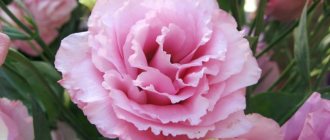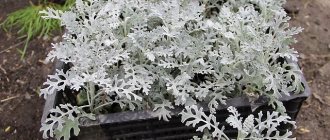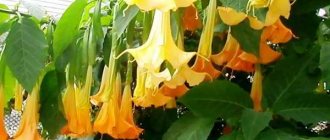Caucasian medlar (Mespilus Caucasei) is a tree with unusual fruits that naturally grows on mountain slopes, in copses and oak forests. Its fruits contain many microelements and vitamins and are of great benefit to patients with hypertension, asthma and diabetes. With regular use, medlar can cleanse the liver and blood vessels and improve digestion.
Caucasian medlar helps remove harmful substances from the body and saturates it with vitamins
Description of the Caucasian medlar with photo
Caucasian medlar is a fruit of the Rosaceae family, native to Eastern Europe and Western Asia. It can be found in Abkhazia, Crimea, Georgia and other countries with a favorable subtropical climate. The culture requires warm winters and summers, high humidity. In the Caucasus it grows as both a wild and garden plant.
Caucasian medlar, or as some call it Abkhazian, is a medium-sized round-shaped fruit, slightly flattened on the sides. In appearance, they resemble small apples; the outside is covered with a fluffy formation. The color of the medlar is brown, with a slight red tint, diameter up to 3 cm, weight up to 8 g. Most of the volume of the fruit is occupied by inedible seeds (seeds), of which there can be up to seven pieces. The taste of the fruit is pleasant, slightly astringent, sweet and sour. Ripening occurs towards the end of summer or autumn, the period depends entirely on the place of growth. Some people collect the fruits of the Caucasian medlar even in December.
The plant is a large tall tree with a spreading crown, capable of reaching eight meters in height. Its trunk is not very voluminous, up to 20 cm in diameter. The leaves are large, wide, leathery, green in color, their surface is glossy, the bottom is velvety, the edges are serrated. With the arrival of autumn they begin to turn yellow and fall off. The foliage of the Caucasian medlar, like the fruits, contains useful substances; decoctions are prepared from it to help cope with asthma and bronchitis. The plant blooms in spring with beautiful large buds of cream and white color, with a pleasant delicate aroma. The crop can be grown as a garden decoration or as a houseplant, but in this case it needs to be created in conditions close to the natural environment. When grown indoors, Caucasian medlar brings a lot of trouble.
Decoctions that help with inflammatory diseases of the respiratory tract are obtained from the leaves of this fruit tree.
Appearance
The fruit ripens in gardens on low trees, up to 4-7 meters in height. They are first covered with green leaves and then flowering begins.
The leaves, like many southern plants, are thick, hard to the touch, veins are clearly visible on them, and the color is dark green. The flowers bloom white.
The fruits are collected in a cluster of 5 to 30 pieces; they are yellow, round in shape, with a diameter of 3 to 5 cm. The color of the pulp ranges from white to yellow-orange.
The plant can live up to 50 years; it enters the fruiting phase after 2, and sometimes after 3 years. It is not grown for industrial purposes, since it will not be tasty for long; once ripe, it quickly deteriorates and rots, which makes transportation impossible.
Composition of medlar and calorie content
Caucasian medlar is not just a beautiful crop with which you can decorate your garden plot, but also a medicinal plant containing many useful substances. Fruits include:
- vitamins A, C, group B;
- minerals (potassium, magnesium, calcium);
- pectin;
- alimentary fiber;
- phytoncides;
- organic acids;
- polysaccharides;
- tannins.
100 g of product contains 4% carbohydrates and 1% daily protein, no fats. The calorie content of Caucasian medlar is 53 kcal.
Attention! The fruit is useful only after full ripening.
Cherry plum
In June, a red fruit similar to a plum ripens throughout Abkhazia. Cherry plum is more sour, less juicy, but aromatic. It is rich in vitamin C and is considered beneficial for the gastrointestinal tract. The famous tkemali sauce is prepared from cherry plum in Abkhazia. Even green fruits are used. They produce an acidic product. Red tkemali is the sweetest, and yellow is approximately in the middle. Try fresh cherry plum; in season, these fruits in Abkhazia cost 30-40 rubles per kg. And bring home a jar of homemade tkemali from the local market.
Medicinal properties of Caucasian medlar
Due to the very high content of ascorbic acid, Caucasian medlar helps strengthen the immune system, helps in the fight against infectious diseases, and increases the body's resistance to them. The fruits have a beneficial effect on the vascular system and prevent thrombosis. Tannins in the plant have a bactericidal effect. The berries are taken as an anti-inflammatory agent and a medicine for removing phlegm. In addition, they help normalize blood circulation. Decoctions from the Caucasian variety of medlar have proven themselves as a good hemostatic agent. The fruit helps cleanse the body of toxins, stimulates intestinal motility, improves the functioning of the gastrointestinal tract and lowers cholesterol levels in the blood. The fruits of the plant have a positive effect on the condition of the muscles and nervous system, normalize blood pressure, have a beneficial effect on the heart, improve blood clotting, which reduces the likelihood of stroke and heart attack. Thanks to its calcium content, Caucasian medlar makes bones, nails and hair strong. It is recommended to include it in the diet of children and women bearing a child, since ascorbic acid contained in the product helps maintain immunity, and folic acid helps the normal development of the embryo.
The fruits of the crop are recommended for consumption by pregnant women and children
Lavrovishnya
It differs from ordinary cherries in that it is darker in color and sweeter. Cherry laurel grows throughout Abkhazia, so in July you can try it straight from the tree. They almost never sell it at bazaars, because fresh berries are usually not eaten. Cherry laurel makes wonderful homemade jam, compotes and liqueur liqueurs. They are worth trying in Abkhazia and bringing home as gifts.
How to eat Caucasian medlar
Caucasian medlar is eaten both fresh and processed. Some housewives prepare compotes, syrups, jam, preserves from it and use the berries as a decoration for desserts. To increase shelf life, fruits can be frozen. Leftover uneaten fruit should be wrapped in paper and stored in the refrigerator.
The medlar harvest is carried out after the berries have acquired softness and a red-brown hue. The culture cannot be transported and can be stored in the refrigerator for no longer than two days.
Before eating the fruit, cut it into two parts, remove the seeds so as not to spoil the impression of the product, and cut off the peel.
Quince
The fresh quince season in Abkhazia begins in October. The fruits are well stored, so they are sold at any time of the year. Externally, the fruits can be confused with overgrown pears or awkward apples. Quince tastes astringent, sweet, but not juicy. In Abkhazia, fruits are used for jam, and also baked with cottage cheese or meat. Few people like fresh quince. But just for fun, you can try it. Bring home quince jam, it’s wonderful in Abkhazia.
The use of medlar in folk medicine
Caucasian medlar is actively used in folk medicine. Tinctures and decoctions are prepared from the fruits of the plant to treat inflammation in the respiratory system, normalize the gastrointestinal tract and digestion system. To obtain the maximum effect in eliminating shortness of breath, cough, and asthma symptoms, make puree from Caucasian medlar mixed with natural honey.
It is known that ripe fruits of the crop produce a laxative effect, while unripe ones, on the contrary, give a fixing effect. A decoction of unripe berries helps with urolithiasis and restores the activity of the gastrointestinal tract.
The fruit can have both a laxative and astringent effect.
Grape
About a dozen varieties of grapes are grown in Abkhazia: table and wine. Tourists enjoy both types. Why not? Black wine grapes, for example, taste like currants with strawberry notes. Try a large green variety or a small seedless one. Note the red and black berries. Feel free to help yourself to any variety. In Abkhazia, grapes are used to make wine, compotes and even jam. They also prepare natural marshmallows and churchkhela. You shouldn’t take the berries home, but grape products will make excellent gastronomic souvenirs.
Harm of Caucasian medlar and contraindications
Caucasian medlar mainly brings benefits to people, but there are some contraindications to its use:
- Individual intolerance. Before trying a fruit, you should make sure you are not allergic to it.
- Chronic stomach problems. People suffering from gastritis, ulcers, and pancreatic diseases should consume berries with caution so as not to cause an aggravation.
- Impaired intestinal motility. The fruits of the plant are very tart, with a high content of tannins, and can cause constipation.
Important! For Caucasian medlar to be healthy, it is eaten in quantities of no more than 5-6 pieces.
Pomegranate
In October and November, a fresh harvest of pomegranates is harvested in Abkhazia. Local fruits are not like Azerbaijani and Turkish ones: they are small, sometimes very ugly, sometimes a little wrinkled. But still invariably sweet, natural, juicy. Abkhazian pomegranates have almost no knitting, are distinguished by their sugar content and are famous for their beneficial properties. At the end of autumn and winter, fresh pomegranates are often sold in Abkhazian bazaars. They squeeze it right in front of you, they don’t spare the fruit. We recommend you try it!
Growing Caucasian medlar at home
Caucasian medlar is a plant that is very easy to grow on site, although it is not particularly popular. This type of fruit tree does not require careful care, can be combined with many crops, and looks interesting in the landscape. In order for the medlar to grow well and bear fruit, it is enough to water it and feed it periodically.
Landing
Caucasian medlar is a tree that can be planted in spring or autumn. It all depends on the climatic conditions of the growing region. The plant prefers sunny areas, without strong winds and drafts. Agricultural experts claim that the crop is frost-resistant, but as practice shows, it does not tolerate extreme cold. The Caucasian medlar does not have any special requirements for the composition of the soil, but it feels best on slightly acidic and neutral soil. The most favorable soil for crop growth is considered to be humus, sandy loam and turf soil with an acidity of 5-6 points.
Comment! The tree is self-pollinating and bears fruit on its own.
If Caucasian medlar is planted in the ground as seedlings, then this is done according to the following algorithm:
- The area for the plant is cleared of weeds in advance, dug up, sprinkled with bone meal and mineral fertilizers.
- Dig a hole so that it is twice the size of the roots of the seedling.
- Place a peg in the hole, place a tree, and cover it with earth.
- Tie the seedling to a support.
- Water generously with warm water.
A couple of days after planting, the plant is mulched with rotted manure and compost.
Advice! For group plantings, the distance between Caucasian medlar seedlings should be at least 400 cm.
When growing a tree from a seed, you should carefully prepare the planting material. Since medlar fruit seeds have a dense shell, before planting they are cut and soaked in water for 10-12 hours. After this, the material is placed in fertile soil treated with boiling water, which is a mixture of ash, humus, sand and peat. The seed needs to be buried 4-5 cm. The sprout of Caucasian medlar should appear a month and a half after planting the seed. For two years it is provided with normal care, then it is planted in a permanent place.
In order for the tree to grow evenly and beautifully, its seedling is tied to a peg
Care
There are no particular difficulties when caring for the Caucasian variety of medlar. The crop requires moderate watering; stagnation of moisture in the tree trunk should be avoided. The tree responds favorably to fertilizing with organic fertilizers with mullein (ratio 8:1). It is advisable to feed young specimens and seedlings once a month, adults - twice a season. To form the crown, it is advisable to prune the tree; the procedure is also necessary for sanitary purposes. Sick, damaged, dry branches of the crop should be removed regularly; the yield and health of the plant depend on this. In spring, it is advisable to prune frozen and unpromising shoots.
Advice! In the first couple of years, it is advisable to shorten the branches of Caucasian medlar seedlings by half.
Reproduction
In the Caucasus, the plant can often be found on the streets, in vegetable gardens and orchards. The culture is excellent for landscaping areas. It is most often propagated by cuttings or seeds, less often by layering.
In the first case, gardeners cut off a shoot from an adult fruit tree, remove half of its leaves and soak it in water for half a day. Then the cut area is treated with ash and planted on the site. Cuttings are usually accepted 1.5-2 months after planting.
In the second case, the seeds of ripe fruits are cut into two parts, soaked in water, and then planted in a container filled with fertile soil mixture. After a year, the sprout is transplanted into a pot of larger diameter, and after the same amount of time it is planted in a permanent place.
With the onset of autumn, some gardeners bend the stem of a tree to the soil, make a cut on it and cover it with film. With the arrival of warm spring days, the shelter is removed, if the shoot from the incision site has taken root, it is replanted.
Planting a seedling in a permanent place
The young tree loves light; it should be planted only in a well-lit area. Loquat cannot be planted in areas with high groundwater, as it needs good drainage.
Planting stages:
- prepare a hole with a diameter 1/3 larger than the seedling’s earthen ball;
- Place a layer of drainage on the bottom and add complex fertilizer with bone meal;
- prepare a mixture of peat, soil, humus and sand in equal proportions;
- water the planting hole and place the seedling in the hole;
- sprinkle with the prepared mixture and compact well;
- mulch the tree trunk with humus or compost.
Within a year, the tree will take root and begin to grow. It's important to do everything right.
Fruits of Abkhazia by month
We have listed in the table the main fruits that grow in Abkhazia. It tells you when something ripens. The most delicate fruits, like medlars or plums, are sold only in season. But citrus fruits are sold all year round, although they ripen from November to December. Some fruits are sold during the season and a couple of months after it. For example, kiwi in Abkhazia ripens in October and November, but the fruits are sold all winter.
| MONTH | FRUITS |
| January | Quince, oranges, lemons, tangerines |
| February | Quince, oranges, lemons, tangerines |
| March | — |
| April | — |
| May | Cherry, wild strawberry, strawberry, medlar, sweet cherry, mulberry |
| June | Cherry plum, cherry, medlar, sweet cherry, mulberry |
| July | Cherry plums, pears, blackberries, bay cherries, nectarines, peaches, plums, prunes, apples |
| August | Watermelons, grapes, pears, melons, blackberries, figs, dogwoods, nectarines, peaches, apples |
| September | Grapes, pear, figs, peaches, apples |
| October | Quince, grapes, pomegranates, pears, kiwi, feijoa, persimmon, apples |
| November | Quince, pomegranates, kiwi, lemons, tangerines, feijoa, persimmon |
| December | Quince, oranges, grapefruits, lemons, tangerines |
Before traveling to Sukhum, Pitsunda or Gagra, read our article on shopping. Traditional souvenirs, gift ideas for loved ones, delicacies - in it we have collected everything that is worth bringing from Abkhazia. We also wrote a separate post about the best traditional dishes of local cuisine.
>>> Useful services for travelers <<











